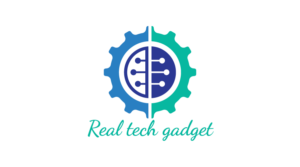As the world gradually emerges from the constraints of lockdowns, many businesses are facing a significant question: Does the end of the lockdown signal a return to the normal office life we once knew, or are we witnessing the start of a new era in the workplace? The shift in how we work, communicate, and collaborate during the pandemic has left a lasting mark, and now companies are faced with navigating the fine balance between a pre-pandemic office culture and the evolving demands of modern work.
The Shift in Work Culture
Before the pandemic, office life was largely defined by the traditional 9-to-5 model, where employees commuted to a physical workspace, had in-person meetings, and worked in shared spaces. However, the pandemic forced businesses to adapt quickly to remote work, a shift that was initially seen as temporary but quickly became the norm for many organizations. While lockdowns are now easing and offices are reopening, it’s clear that the way we work has permanently changed. Companies are using employee monitoring applications like Controlio.
Hybrid Work: The New Standard?
The most significant change to office life in the post-lockdown world is the rise of hybrid work models. Many companies are moving away from the “return to normal” approach and instead embracing a flexible blend of in-office and remote work. According to a study by McKinsey, nearly 80% of workers prefer a hybrid work model, valuing the flexibility to work from home while still maintaining in-person collaboration when needed. For companies, this means offering employees the choice of where they work, which can enhance productivity, reduce stress, and improve work-life balance.
Hybrid work allows businesses to retain talent and attract new employees who prioritize flexibility in their careers. The shift also offers potential cost savings on office space as fewer employees need to be on-site every day. However, this new structure brings its own set of challenges, including the need for better communication tools, clear expectations, and a focus on maintaining company culture despite the physical distance.
The Importance of Office Collaboration
While remote work has proven to be successful for many, there is no denying the value of in-person collaboration. The office has long been a space for brainstorming, impromptu discussions, team-building activities, and fostering a sense of community. As companies embrace hybrid work, finding the right balance between remote flexibility and in-office collaboration is essential. Some businesses are designating specific days for in-office work, encouraging employees to come together for brainstorming sessions, client meetings, or team-building activities that benefit from face-to-face interaction.
The return to office life is also an opportunity for companies to redesign their workspaces. Many organizations are reconsidering their office layouts, opting for open spaces that promote collaboration, break-out rooms for meetings, and quiet spaces for focused work. This shift not only aligns with the hybrid model but also prioritizes employee well-being and a positive work environment.
A New Definition of “Normal”
Ultimately, the end of lockdown does not mean a simple return to “normal” office life. Instead, it marks the beginning of a new chapter in how we work. The boundaries between office and home are increasingly blurred, and with that comes new expectations for flexibility, autonomy, and work-life integration.
Businesses that embrace this shift will likely find themselves better equipped to thrive in the post-pandemic world. By offering a mix of in-person and remote work, fostering collaboration, and focusing on employee well-being, companies can create a modern workplace that supports both individual needs and collective goals.
The future of office life isn’t about going back—it’s about moving forward into a new and more adaptable work culture that reflects the lessons learned during the pandemic. So many companies using surveillance technology. Whether working from the office, home, or somewhere in between, one thing is clear: the workplace has fundamentally changed, and the return to normal is not as simple as it seems.

